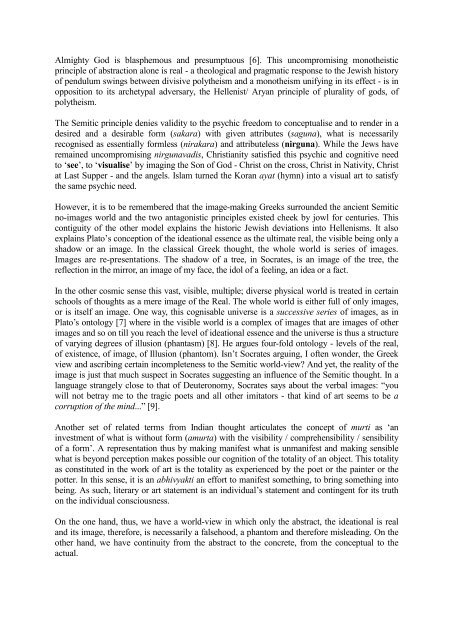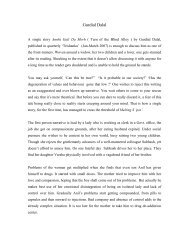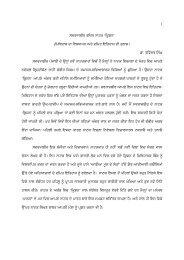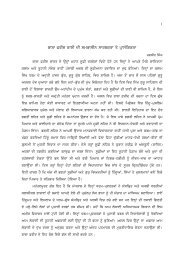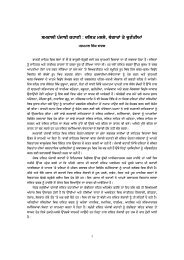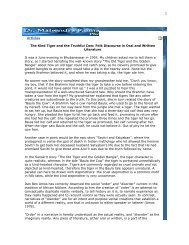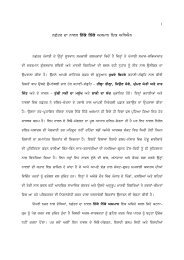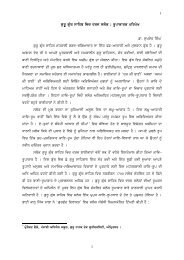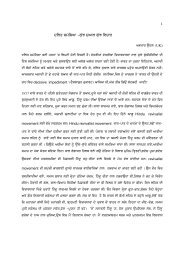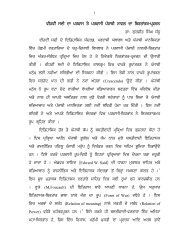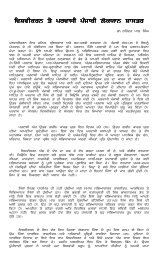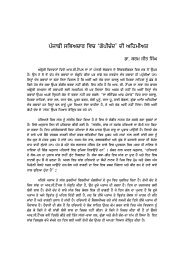Dialogue Among Civilizations-Kapil Kapoor-23 ... - Panjabi Alochana
Dialogue Among Civilizations-Kapil Kapoor-23 ... - Panjabi Alochana
Dialogue Among Civilizations-Kapil Kapoor-23 ... - Panjabi Alochana
Create successful ePaper yourself
Turn your PDF publications into a flip-book with our unique Google optimized e-Paper software.
Almighty God is blasphemous and presumptuous [6]. This uncompromising monotheisticprinciple of abstraction alone is real - a theological and pragmatic response to the Jewish historyof pendulum swings between divisive polytheism and a monotheism unifying in its effect - is inopposition to its archetypal adversary, the Hellenist/ Aryan principle of plurality of gods, ofpolytheism.The Semitic principle denies validity to the psychic freedom to conceptualise and to render in adesired and a desirable form (sakara) with given attributes (saguna), what is necessarilyrecognised as essentially formless (nirakara) and attributeless (nirguna). While the Jews haveremained uncompromising nirgunavadis, Christianity satisfied this psychic and cognitive needto ‘see’, to ‘visualise’ by imaging the Son of God - Christ on the cross, Christ in Nativity, Christat Last Supper - and the angels. Islam turned the Koran ayat (hymn) into a visual art to satisfythe same psychic need.However, it is to be remembered that the image-making Greeks surrounded the ancient Semiticno-images world and the two antagonistic principles existed cheek by jowl for centuries. Thiscontiguity of the other model explains the historic Jewish deviations into Hellenisms. It alsoexplains Plato’s conception of the ideational essence as the ultimate real, the visible being only ashadow or an image. In the classical Greek thought, the whole world is series of images.Images are re-presentations. The shadow of a tree, in Socrates, is an image of the tree, thereflection in the mirror, an image of my face, the idol of a feeling, an idea or a fact.In the other cosmic sense this vast, visible, multiple; diverse physical world is treated in certainschools of thoughts as a mere image of the Real. The whole world is either full of only images,or is itself an image. One way, this cognisable universe is a successive series of images, as inPlato’s ontology [7] where in the visible world is a complex of images that are images of otherimages and so on till you reach the level of ideational essence and the universe is thus a structureof varying degrees of illusion (phantasm) [8]. He argues four-fold ontology - levels of the real,of existence, of image, of Illusion (phantom). Isn’t Socrates arguing, I often wonder, the Greekview and ascribing certain incompleteness to the Semitic world-view? And yet, the reality of theimage is just that much suspect in Socrates suggesting an influence of the Semitic thought. In alanguage strangely close to that of Deuteronomy, Socrates says about the verbal images: “youwill not betray me to the tragic poets and all other imitators - that kind of art seems to be acorruption of the mind...” [9].Another set of related terms from Indian thought articulates the concept of murti as ‘aninvestment of what is without form (amurta) with the visibility / comprehensibility / sensibilityof a form’. A representation thus by making manifest what is unmanifest and making sensiblewhat is beyond perception makes possible our cognition of the totality of an object. This totalityas constituted in the work of art is the totality as experienced by the poet or the painter or thepotter. In this sense, it is an abhivyakti an effort to manifest something, to bring something intobeing. As such, literary or art statement is an individual’s statement and contingent for its truthon the individual consciousness.On the one hand, thus, we have a world-view in which only the abstract, the ideational is realand its image, therefore, is necessarily a falsehood, a phantom and therefore misleading. On theother hand, we have continuity from the abstract to the concrete, from the conceptual to theactual.


